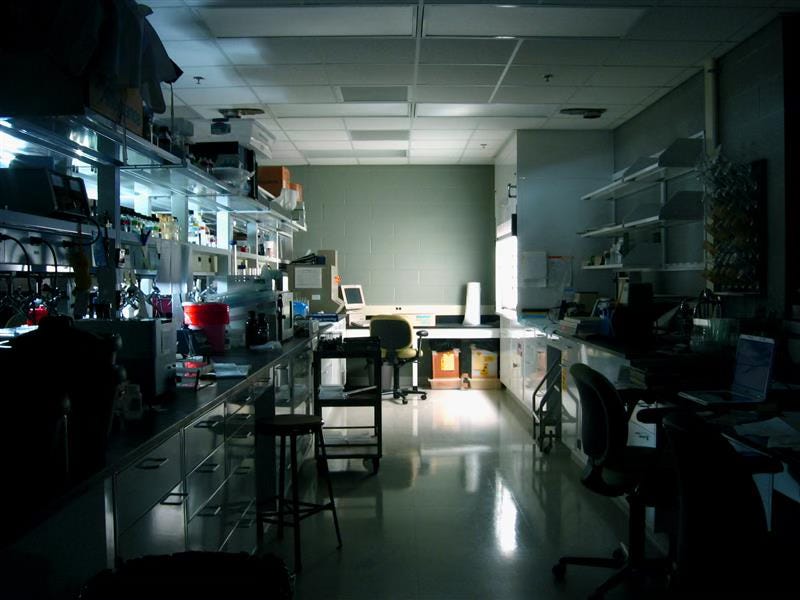The Shutdown Puts the Health of Every American at Risk
It's accelerating the destruction of our health defenses that began ten months ago
12 years ago today, the United States was halfway through what would turn out to be a two-week government shutdown. I was CDC director at the time, and I vividly remember walking through empty labs, alarms beeping, worried about outbreaks we couldn’t detect. It was an eerie feeling, like something out of a science fiction movie.
When the U.S. government shuts down, CDC’s ability to track disease outbreaks and protect Americans is weakened. Data collection stops. Disease surveillance falters. Lab work slows. Communication with state and local health departments breaks down. Requests for assistance and information go unanswered.
This affects all of us.
When CDC can’t track flu, measles, and other infectious diseases effectively, outbreaks can spread undetected faster. When the agency doesn’t share critical information with hospitals and state health departments, doctors can’t respond quickly. When surveillance systems go dark, we lose our early warning system for the next pandemic.
Public health was already under assault – and the current shutdown accelerates the destruction of our health defenses that began ten months ago. The administration has systematically dismantled programs that save lives. CDC programs that tackle tobacco use, cancer, and heart disease are no more.
Regulations on tobacco – our leading cause of chronic disease – are being rolled back. Requirements for PFAS, the forever chemicals in our water, are being delayed or rescinded. Standards for PM2.5, the soot that kills an estimated 100,000 Americans each year, are being weakened.
‘Deregulation’ means open season on our health.
These aren’t abstract policy issues. They’re life and death decisions.
The exodus of experienced public health professionals from CDC makes things considerably worse. The agency has lost nearly a quarter of its staff since January. In August, the CDC director was ousted after just one month on the job. Four more top officials left with her. For the first time ever, political operatives now run an agency that demands deep scientific expertise. I never thought I would see the day when I couldn’t trust information from the CDC website, as I told Science Friday.
Unfortunately, knowledge and operational gaps can’t be fully closed by state and local health departments, as creative and dedicated as many are. States often lack CDC’s deep, disease-specific technical expertise. They can’t replace a competent national public health system.
But states and cities can fill some gaps. Because the shutdown interrupted CDC data flows, epidemiologist Caitlin Rivers and her team at Johns Hopkins University visited all 50 state health department websites to compile disease surveillance data that CDC could no longer provide. This work shows both the dedication of public health professionals and the importance of collecting critical data at the state and local levels.
States and local health departments can fill funding gaps, philanthropy and the private sector can step up community investments, and medical groups can continue to stand up for science and truth. Other countries can provide global funding and leadership in where the U.S. is falling short. Most importantly, we need to build forward. We need to try new approaches to work faster, communicate better, and build stronger alliances.
We have the power to prevent disease if we choose to invest in it. Communities and individuals can make progress by seeing health threats clearly, building confidence that we can tackle them, and overcoming barriers to action – a formula that has saved millions of lives and can save millions more.
Here’s what you can do:
Support your local health department. It can save your life just as your fire department and police department do.
Advocate for a better health care system. It’s scandalous that we spend more than $4.5 trillion on health care and have worse life expectancy than any other peer country.
Demand primary care access. Everyone needs a doctor or nurse they can call with questions and yet one third of Americans don’t have a primary care provider.
Hold leaders accountable. Look at what they do, not just what they say. The administration has claimed to address chronic disease while eliminating tobacco and heart disease programs, claimed to care about environmental contamination while rolling back protectionss, and claimed to want to restore trust while undermining it.
The shutdown will end. The political interference won’t stop without pressure, and diseases will continue to go undetected if we don’t preserve our early warning systems.
We need to act now to protect what remains of our public health system, restore what we’ve lost, and create even better structures for the future. It won’t be easy, but we can make progress one day at a time.
Dr. Tom Frieden is author of The Formula for Better Health: How to Save Millions of Lives – Including Your Own.
The book draws on Frieden’s four decades leading life-saving programs in the U.S. and globally. Frieden led New York City’s control of multidrug-resistant tuberculosis, supported India’s efforts that prevented more than 3 million tuberculosis deaths, and led efforts that reduced smoking in NYC.
As Director of the CDC (2009-2017), he led the agency’s response that ended the Ebola epidemic. Dr. Frieden is President and CEO of Resolve to Save Lives, partnering locally and globally to find and scale solutions to the world’s deadliest health threats.
Named one of TIME’s 100 Most Influential People, he has published more than 300 scientific articles on improving health. His experience is, for the first time, translated into practical approaches for community and personal health in The Formula for Better Health.


